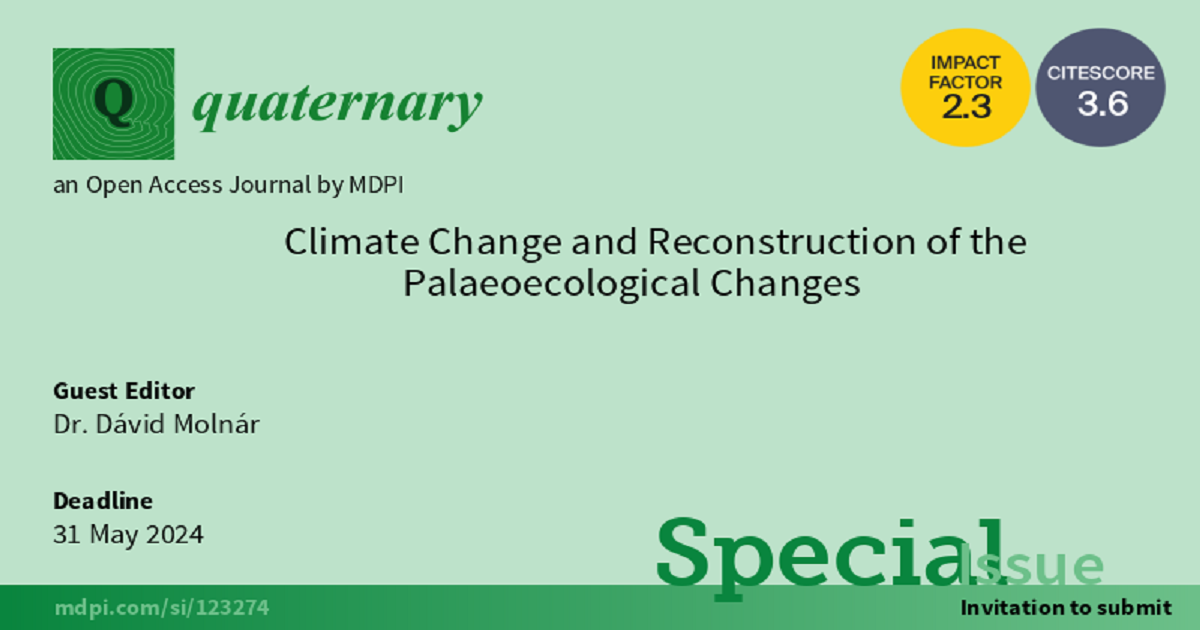Climate Change and Reconstruction of the Palaeoecological Changes
A special issue of Quaternary (ISSN 2571-550X).
Deadline for manuscript submissions: 31 May 2024 | Viewed by 10535

Special Issue Editor
Interests: paleoecology; malacology; quaternary; loess–paleosol sequences; sedimentology
Special Issues, Collections and Topics in MDPI journals
Special Issue Information
Dear Colleagues,
While climate change is not new in the history of the Earth, there have been many changes over the Quaternary to which the environment (and the animals and plants that live in it) have responded in different ways and at different rates. One of the great challenges of palaeoecology is elucidating the response of biotic and abiotic components of the environment to changing climatic conditions in a given study area.
We are inviting you to submit a paper to the Special Issue “Climate Change and Reconstruction of the Palaeoecological Changes”. This Issue seeks to investigate the interactions between climate change and paleoecological patterns at global, regional, and local scales using paleoenvironmental, paleoclimatic sedimentological, archaeological, geochemical, and malacological approaches. This Issue is open to all periods and regions.
Dr. Dávid Molnár
Guest Editor
Manuscript Submission Information
Manuscripts should be submitted online at www.mdpi.com by registering and logging in to this website. Once you are registered, click here to go to the submission form. Manuscripts can be submitted until the deadline. All submissions that pass pre-check are peer-reviewed. Accepted papers will be published continuously in the journal (as soon as accepted) and will be listed together on the special issue website. Research articles, review articles as well as short communications are invited. For planned papers, a title and short abstract (about 100 words) can be sent to the Editorial Office for announcement on this website.
Submitted manuscripts should not have been published previously, nor be under consideration for publication elsewhere (except conference proceedings papers). All manuscripts are thoroughly refereed through a single-blind peer-review process. A guide for authors and other relevant information for submission of manuscripts is available on the Instructions for Authors page. Quaternary is an international peer-reviewed open access quarterly journal published by MDPI.
Please visit the Instructions for Authors page before submitting a manuscript. The Article Processing Charge (APC) for publication in this open access journal is 1600 CHF (Swiss Francs). Submitted papers should be well formatted and use good English. Authors may use MDPI's English editing service prior to publication or during author revisions.
Keywords
- paleoecology
- paleoclimate
- quaternary
- loess-paleosol profile
- geoarchaeology
- malacology
- palynology
- geochemistry
- sedimentology





